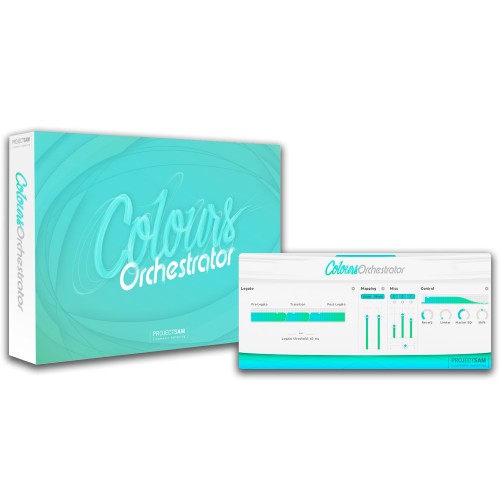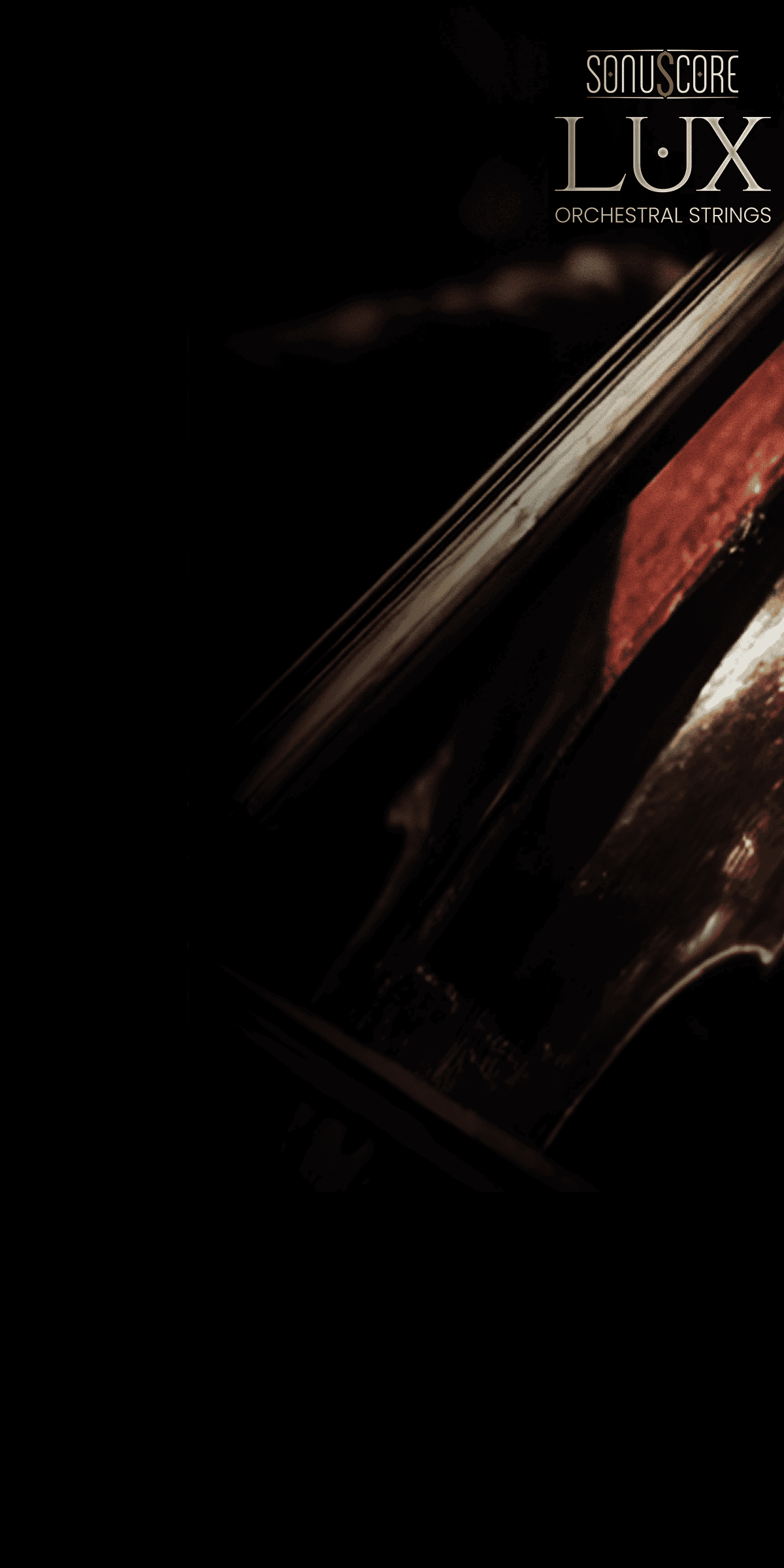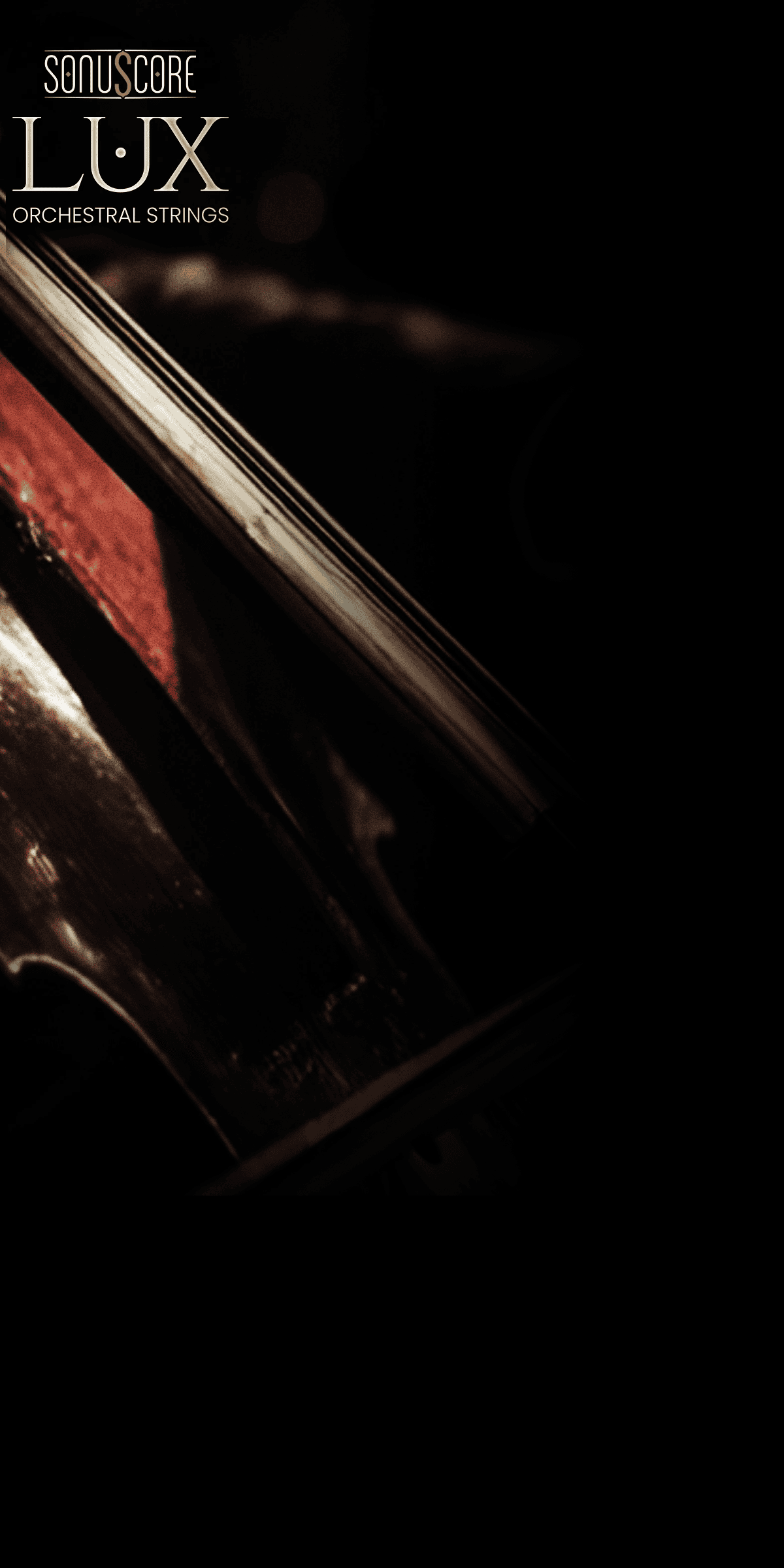
Auf dem SYMPHOBIA Konzept basierend, bietet die COLOURS Serie frische Sounds in kleineren Paketen.
Werfen wir zuerst einen Blick auf die Grundidee: Real Legato Übergänge für Akkorde! Für COLOURS: ORCHESTRATOR hat ProjectSAM Dur- und Moll-Akkorde mit allen möglichen Übergängen aufgenommen. Zum Beispiel wurden C-Dur und F-Moll sowohl separat aufgenommen, aber auch der Übergang zwischen C-Dur und F-Moll in beiden Richtungen wurde aufgenommen. Das Ergebnis ist extrem realistisch, musikalisch und bewegend.
Die beiden Ensembles, die für Orchestrator aufgenommen wurden, sind Strings mit Chören sowie Blech- und Holzbläser. Für beide Arrangements steht ein volles Set mit Legato Akkorden zur Verfügung. Dur und Moll Akkorde sind in zwei Regionen auf das Keyboard gemapped, um diese über einzelne Tasten triggern und verbinden zu können.
Zusätzlich zu den Legato Akkorden steht eine Menge anderer Kombinationen zur Verfügung, wie legato Contrabass mit Bass-Chören, Violine mit Sopran-Sustains, verschiedene Staccato Akkorde und auch ein bonus Set von alternativen Akkord Orchestrierungen.
Jeder Instrumententyp in ORCHESTRATOR hat eine konsistente Region auf den Keyboard. Akkorde wurden immer auf die selbe Oktave gemapped, ebenso Low Basses und High Sustains. Das macht es total einfach, verschiedene Sound zu überlagern. Die enthaltenen Multis bieten dir jede Menge solcher Kombinationen.
ORCHESTRATOR ist ein unglaublich inspirierendes Werkzeug, das vom ersten Tag an seinen Weg in jedes Orchester Template finden wird.
Detaillierte Beschreibung in englischer Sprache:
The following overview lists the exact arrangements and articulations for every patch found in ORCHESTRATOR
1 Legato Chords: Brass + Winds
12 Major and 12 minor chords
Arranged for flutes, oboes, clarinets, horns and trombones
Real chord-to-chord transitions
3 Dynamic layers
2 Legato Chords: Strings + Choir - Arco
12 Major and 12 minor chords, strings playing arco
Arranged for 1st and 2nd violins, violas, cellos, altos, sopranos and tenors
Real chord-to-chord transitions
3 Dynamic layers
MF layer has additional cresc-dim articulation on low velocity
3 Legato Chords: Strings + Choir - Bonus Tremolo
12 Major and 12 minor chords, strings playing tremolo
Arranged for 1st and 2nd violins, violas, cellos, altos, sopranos and tenors
Real chord-to-chord transitions, but using arco recordings for the transitions
3 Dynamic layers
4 Legato Octaves: Dark Basses
Octaves
Arranged for double basses and choir basses
Real note-to-note legato transitions
5 Non-Legato Chords: High Strings + Choir
12 Major and 12 minor chords, higher orchestration/wider voicing
Arranged for 1st and 2nd violins, violas, cellos, altos, sopranos and tenors
3 Dynamic layers
6 Non-Legato Sustain: High Strings + Choir
Octaves and octave with flageolets
Arranged for 1st and 2nd violins, violas, cellos, altos, sopranos and tenors
2 Dynamic layers
7 Non-Legato Octaves: Celli and Basses
Octaves
Arranged for cellos and double basses
2 Dynamic layers
Source: Symphobia
8 Staccato Chords: Strings + Choir
12 Major and 12 minor chords, staccato
Arco and pizzicato variation
Arranged for 1st and 2nd violins, violas, cellos, altos, sopranos and tenors
2 Dynamic layers
2x Round robin
9 Staccato Chords: Brass + Winds
12 Major and 12 minor chords, staccato
Arranged for flutes, oboes, clarinets, horns and trombones
2 Dynamic layers
2x Round robin
ORCHESTRATOR offers the following Kontakt Multis, stacking different combinations of the above instruments:
- 1 Strings + Choir | Basses + Celli | High Sus
- 2 Strings + Choir | Bonus Chords | Basses + Celli | High Sus
- 3 Brass + Winds | Basses + Celli | High Sus
- 4 Brass + Winds | Bonus Chords | Basses + Celli | High Sus
- 5 Brass + Winds | Dark Basses | High Sus
- 6 Grand Orchestra
- 7 Grand Staccato
Recorded dynamic layers: 3
Recorded release trail samples: yes
Recorded round robin (staccato chords): 2

![]()
So what’s the bottom line?
Of course ProjectSAM knows exactly what they set out to do, and they accomplish it.
If you’re looking for quickly accessible legato orchestral chords, this is definitely something worth looking into.
I give ORCHESTRATOR 4.5 out of 5 subs, it sounds amazing, is super easy to use, and it can stand on it’s own or blend in with other products from the Symphobia family.
It is well known that products like this are aimed at film scoring, cinematic production, and orchestration, however I find them to be perfectly at home in contemporary music production as well.
SoundsAndGear review Orchestrator

SoundsAndGear, 4,5 subs

Dieses Produkt benötigt den kostenlosen Native Instruments Kontakt Player, die neueste Version kann über Native Access, dem Download-Manager von Native Instruments, heruntergeladen werden!
Die erforderliche Kontakt Version für dieses Produkt entnehmen Sie bitte der Produktbeschreibung oder der Herstellerseite.
Systemanforderung:
Mac:
- macOS 10.14 oder höher
- 64 bit
- Intel Core i5 or Apple M1 (native)
- RAM: 4GB (6GB empfohlen)
Windows:
- Windows 10 or higher
- 64 bit
- Intel Core i5 oder ähnliche CPU
- RAM: 4GB (6GB empfohlen)
Unterstützte Schnittstellen:
- Mac (64-bit): Stand-alone, VST, VST3, AU, AAX
- Windows (64-bit): Stand-alone, VST, VST3, AAX
Vorherige Versions:
Wenn Sie eine ältere Version des Kontakt Players benötigen, besuchen Sie bitte diesen Knowledge Base Eintrag.
Erforderliche Registrierung:
Für die Nutzung von Project SAM Produkten müssen Sie sich beim Hersteller unter www.projectsam.com registrieren, um Ihre Lizenz zu aktivieren. Für die Nutzung von Kontakt Player Libraries ist auch eine Registrierung bei www.native-instruments.com erforderlich.
Dieses Produkt benötigt eine Aktivierung!
Sie benötigen Native Access für die Installation, Registrierung, Aktivierung und Aktualisierung Ihrer Produkte. Starten Sie die Native Access-Software und melden Sie sich mit Ihren Native Instruments-Anmeldedaten an, um mit der Einrichtung zu beginnen.
Zur erfolgreichen Aktivierung benötigt Native Access eine funktionierende Internetverbindung.
Eine Offline Aktivierung auf einem andern Computer kann NICHT durchgeführt werden.




